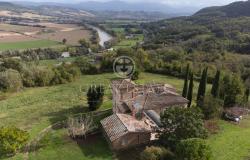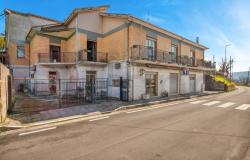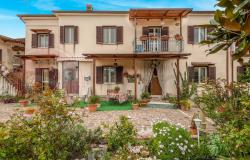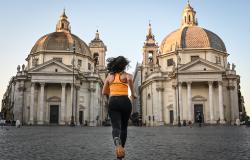 The less familiar side of Gian Lorenzo Bernini's genius - his skill with the painter's brush - is being celebrated in a show opening Thursday at the National Gallery of Ancient Art.
The less familiar side of Gian Lorenzo Bernini's genius - his skill with the painter's brush - is being celebrated in a show opening Thursday at the National Gallery of Ancient Art.
Bernini (1598-1680) first rose to prominence as a sculptor but, like his predecessor Michelangelo, his talent extended to painting and architecture.
The general public is mainly familiar with his work at the Vatican, where as chief architect he designed St. Peter's square and the surrounding colonnade.
He is also credited with shaping Rome into a Baroque city by sprinkling it with a number of churches and fountains, including the Triton fountain in Piazza Barberini and the spectacular Four Rivers fountain in Piazza Navona.
But Bernini was also an exceptional portrait artist and this aspect is highlighted in the exhibit at Palazzo Barberini which brings together 30 paintings and drawings and a single sculpture which is closely linked to the artist's personal life.
The marble bust of his lover Costanza Bonarelli is also notable in that it is the only portrait Bernini ever produced without a commission.
British art critic Jonathan Jones has said that the bust captures Costanza "mid-glance, mid-conversation, perhaps before or after sex".
Bernini's four authenticated self-portraits, including one that has not been displayed for several decades, feature in the opening section of the exhibit.
Another three portraits of the artist - not believed to be by the master's hand - will also flank the others, curator Tomaso Montanari said. These are thought to be copies of lost portraits or possibly painted by Bernini's pupils under his direction.
The show is divided into three thematic areas - self-portaits, portraits and sacred art - but these will be further organised into sub-sections which delve into Bernini's relationship with his pupils, his patrons and his interpretation of the sacred.
Bernini, born in 1598, spent his formative years learning his craft from his father Pietro, a Florentine sculptor and minor artist who moved to Rome.
Gian Lorenzo was considered something of a prodigy and by the age of 20 had come to the attention of Cardinal Scipione Borghese, a member of the reigning papal family, under whose patronage he carved his first important life-sized sculptural groups.
By the age of 26, Bernini had been chosen by Pope Urban VIII to work on St. Peter's tomb inside the basilica in Rome.
Although some critics categorize the towering Baldacchino (as the Canopy is known) as sculpture, the majority view it as Bernini's first major work of architecture.
In his 1998 book, Bernini And The Art Of Architecture, art history professor Tod Marder wrote: "He considered himself an architect and a sculptor. He is the first artist in the history of Western European art to bring these different media - architecture, sculpture and painting - together, to the extent that their very definitions become blurred".
This ability to synthesize architecture, sculpture and painting is known as a 'bel composto' or beautiful whole, a term first coined by the artist's son, Domenico, in his biography of Gian Lorenzo.
The show at Palazzo Barberini opens on October 19 and runs until January 20.













